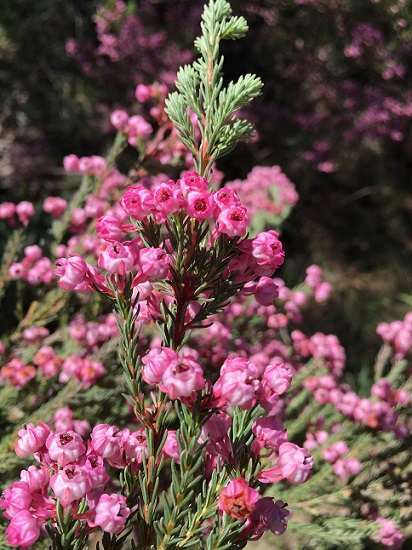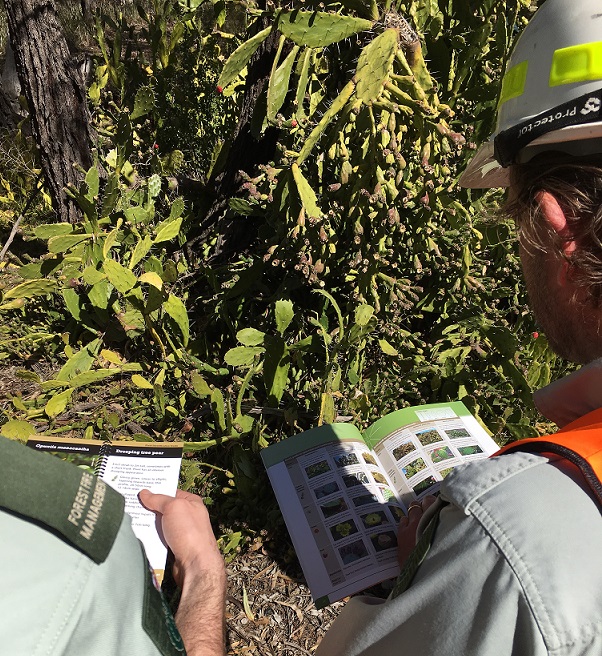Weeds at the Early Stage of Invasion (WESI)
Invasive species management, including weed management, is an integral component of any landscape or reserve scale conservation program. The benefits of a preventative and early intervention approach has been adopted in many parts of the world with great success.
The WESI Project was created to promote these benefits and enable Victoria to adopt this approach, with a focus on high risk invasive weeds that are in the early stage of invasion and threaten biodiversity. We work with public land and biodiversity managers anywhere in Victoria.
The WESI Project and several other weed management projects are funded by the Victorian Government through the Weeds and Pests on Public Land program.
Weed management
Weed activities fall into four broad categories: prevention, eradication, containment and asset-based protection.
Better understanding of these different management approaches means that public land managers can make informed decisions, invest resources wisely, and have better biodiversity outcomes.
Weeds at the early stage of invasion (early invader weeds) are plants that have naturalised and started to spread and their eradication is extremely important for the protection of Victoria’s biodiversity.
Eradication is the elimination of every single individual (including propagules e.g. seeds and buds) of a species from a defined area in which recolonisation is unlikely to occur.
Berry Flower Heath (Erica baccans) is one of many environmental weeds in Victoria moving into new areas. Image: Kate Blood
Early invader tools
The WESI project has developed a decision making framework that guides public land and biodiversity managers through the process of dealing with early invader weeds.
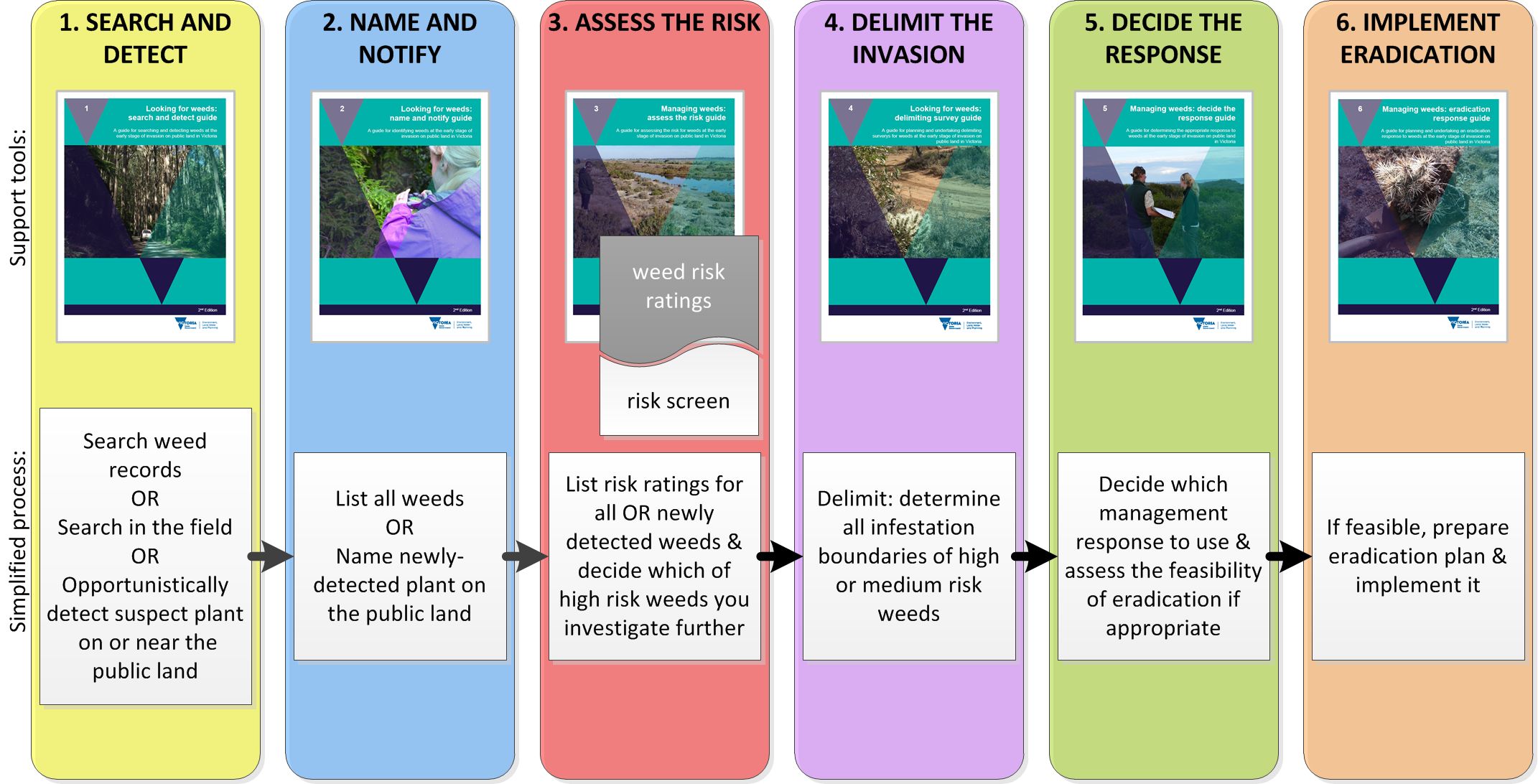
Decision making framework for early invader weeds.
Early invader manual
The early invader manual describes the components of the framework and is a great place to start.
WESI Early invader manual (PDF, 13.3 MB)
WESI Early invader manual (accessible version) (DOCX, 292.6 KB)
For those wanting more detail about each step of the framework, see the following six guides. By following the step-by-step information in the series of guides, public land managers can improve their decision making to plan and undertake work.
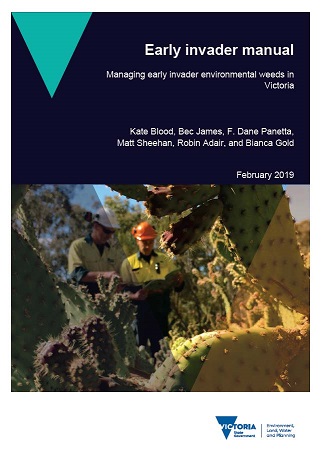
Regularly searching for weeds at the early stage of invasion is a good way to prevent the next widespread weed.
We have created this guide to assist you when searching for and detecting weeds at the early stage of invasion. It also contains information on how to organise a search, and where and what to look for.
Looking for weeds: search and detect guide (PDF, 11.6 MB)
Looking for weeds: search and detect guide (Accessible) (DOCX, 446.3 KB)
As we travel around our local patch, we become familiar with the common weeds. Occasionally, something new or unfamiliar catches our eye. This guide has been designed to assist in finding out what an unfamiliar plant is. It may be a weed at the early stage of invasion in your area.
Looking for weeds: name and notify guide (PDF, 7.1 MB)
Looking for weeds: name and notify guide (Accessible) (DOCX, 365.4 KB)
If you have found an unusual weed and worked out what it is, you will need to establish if it has potential to be a future problem. The following guide can assist you to assess the risk.
Managing weeds: assess the risk guide (PDF, 7.1 MB)
Managing weeds: assess the risk guide (Accessible) (DOCX, 381.5 KB)
Risk rating information is available for many environmental weeds in Victoria.
Once you have identified a high risk weed, you need to find out how far the infestation has spread. Knowing this information will provide clarity on the scale and task ahead for managing the infestation.
Looking for weeds: delimiting survey guide (PDF, 14.4 MB)
Looking for weeds: delimiting survey guide (Accessible) (DOCX, 369.1 KB)
You should establish if you need to eradicate the weed, contain it, control it sufficiently to protect the biodiversity values, or monitor it?
The following guide has been designed to assist you to make these decisions.
Managing weeds: decide the response guide (PDF, 4.0 MB)
Managing weeds: decide the response guide (Accessible) (DOCX, 402.5 KB)
If eradicating a weed is a feasible aim (removing it completely from your patch), having a plan improves your chances of success. This guide will assist you to plan and carry out eradication works.
Managing weeds: eradication response guide (PDF, 6.8 MB)
Managing weeds: eradication response guide (Accessible) (DOCX, 439.0 KB)
Weed management after fire webinar series
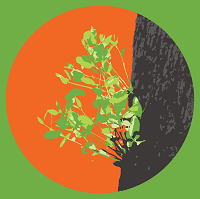
After bushfire, our ecosystems are at their most vulnerable to weed invasion. We can help support indigenous flora and fauna by managing weeds in bushfire affected areas. This webinar series recorded in late 2020 focuses on sharing practical knowledge so everyone can contribute to bushfire recovery. The recordings are available on the SWIFFT website https://tinyurl.com/WeedsAfterFire
An evaluation report of the webinar series has been developed detailing how the webinars were planned, run and evaluated. The information and evaluation will help people contemplating and running webinars and similar activities in the future.
Weed management after fire webinar series evaluation report 2020 (PDF, 4.8 MB)
Weed management after fire webinar series evaluation report 2020 (Accessible version) (DOCX, 1.0 MB)
These webinars were funded by the Victorian Government’s $22.5 million Bushfire Biodiversity Response and Recovery program. For more information on the BBRR program, visit www.wildlife.vic.gov.au/home/biodiversity-bushfire-response-and-recovery
Early invader weeds update
This quarterly newsletter contains news from the Weeds at the Early Stage of Invasion (WESI) Project about managing early invader environmental weeds in Victoria. Previous newsletter names include: "Early Invader Update" and "Friends of WESI Update".
Early Invader Weeds Update Issue #29 (Sway)
Early Invader Weeds Update Issue #28 (Sway)
Early Invader Weeds Update Issue #27 (Sway)
Early Invader Weeds Update Issue #26 (Sway)
Early Invader Weeds Update Issue #25 (Sway)
Early Invader Weeds Update Issue #24 (Sway)
Early Invader Weeds Update #23 Winter 2021 (PDF, 1.3 MB)
Early Invader Weeds Update #22 Autumn 2021 (PDF, 2.2 MB)
Early Invader Weeds Update #21 Spring-Summer 2020-21 (PDF, 2.8 MB)
Early Invader Weeds Update_Winter_#20_2020(PDF, 1.9 MB)
Early Invader Update #19 Autumn 2020 (PDF, 1.4 MB)
Early Invader Update #18 Fire and weeds feature February 2020
(PDF, 1.2 MB)
Early Invader Update #17 Summer 2019-20 (PDF, 1.3 MB)
Early Invader Update #16 Spring 2019 (PDF, 1.5 MB)
Early Invader Update #15 Winter 2019 (PDF, 2.0 MB)
Early Invader Update #14 Autumn 2019 (PDF, 1.3 MB)
Early Invader Update #13 Summer 2018-19 (PDF, 1.2 MB)
Early Invader Update #12 Spring 2018 (PDF, 1.6 MB)
Early Invader Update #11 Winter 2018 (PDF, 452.4 KB)
Friends of WESI Update #10 Summer 2018 (PDF, 1.8 MB)
Friends of WESI Update #9 Winter 2017 (PDF, 678.7 KB)
Friends of WESI Update #8 Autumn 2017 (PDF, 646.3 KB)
Friends of WESI Update #7 Summer 2016 (PDF, 661.4 KB)
Friends of WESI Update #6 Winter 2016 (PDF, 1.3 MB)
Which weed is it? There are many tools to help with weed identification. Photo: Kate Blood
Page last updated: 08/04/24
